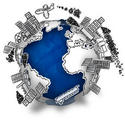Californians attend innumerable conferences on housing and economic growth. Year after year, in counties across California, the same people show up to say and hear the same things. Mostly what they say and hear is naive, and nothing ever changes.
I was reminded of this when I saw a report on what appears to have been a typical conference at the Harris Ranch on Growing the Central Valley Economy. read more »






















